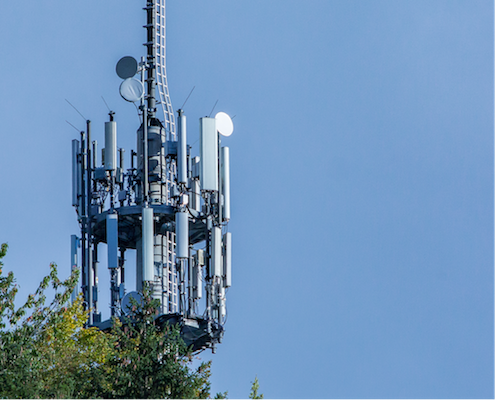Health risk from mobile radio & WLAN in living rooms and bedrooms
High frequency is the term used to describe electromagnetic fields (EMF-HF) with frequencies above 300 kHz. In mobile communications, a whole range of frequencies are used for the transmission of communication and data, these range from 700 MHz to 2,600 MHz (2.6 GHz). For the use of the 5th generation of mobile communications (5G), the frequencies from 3.4 to 3.7 GHz are added.
DECT phones, for example, operate at a frequency of 1.88 GHz-1.9 GHz, while WLAN operates at frequencies of 2.4 GHz and 5 GHz. The new 6 GHz “Wi-Fi 6E” WLAN operates between frequencies of 5.9 GHz to 7.1 GHz, which are expected to be available by mid-2021.
The International Agency for Research on Cancer (IARC), classifies EMF RF fields, such as those generated by mobile phone use, as “possibly carcinogenic.” Mobile phone radiation has thus been classified as a class 2B carcinogen. This group includes diesel fuel, car exhaust from gasoline engines, biocide lindane or pentachlorophenol PCP.
Health effects of high-frequency radiation such as mobile radio or WLAN can be manifested by symptoms such as chronic fatigue, insomnia, restlessness, nervousness or loss of performance. According to estimates, about five to nine percent of the population are already electrosensitive.
The permanent stress on human cells under EMF RF influence is also called electrostress. The term electrostress describes the negative biological or health effects or consequences that can result from human exposure to EMF-NF fields as well as EMF-HF waves. Children in particular should be protected from excessive as well as prolonged exposure to radiation.
A health risk by the use of mobile radio, WLAN or Bluetooth cannot be excluded. The recommendation of building biology is clear: less is more. The use of mobile radio, WLAN and Bluetooth or pulsed high frequency in general should be avoided as far as possible in living rooms and bedrooms.
Many devices can be easily connected with an Ethernet adapter (LAN connection), so that the use of smart devices is still possible “offline”.


